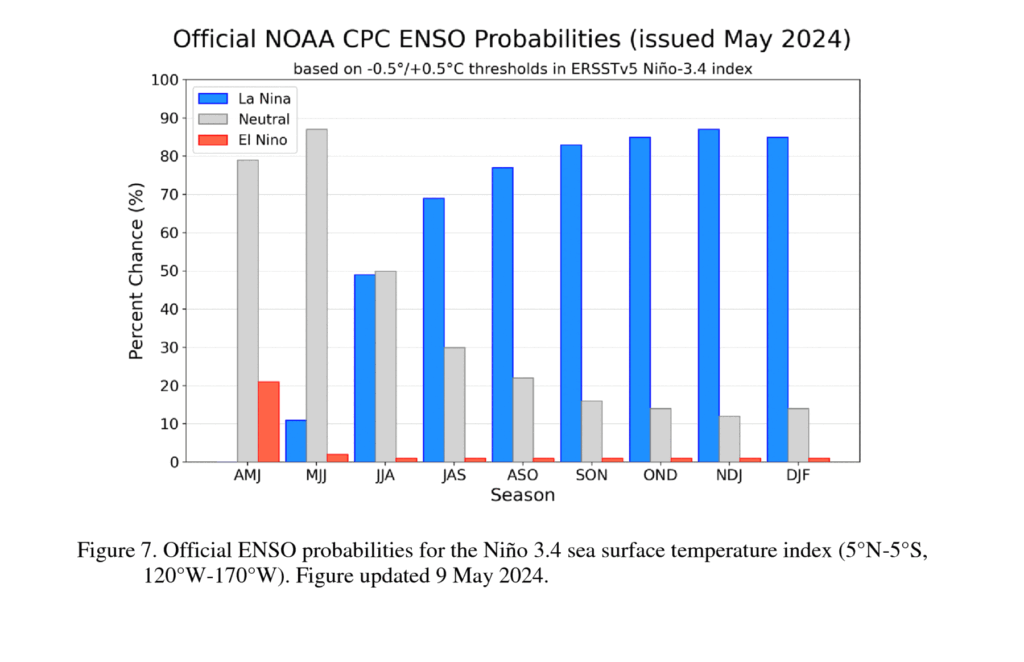NOAA’s Climate Prediction Center released their latest ENSO forecast today. As predicted, they expect the current weakening El Nino to transition to neutral conditions sometime in the next month. This is expected to be followed by a swing to La Nina by June-August (49%) or July-September (69%). The La Nina is expected to dominate the global climate for the rest of the year and into next spring. A La Nina means that an active Atlantic tropical season is more likely and also means that in the Southeast, our winter is likely to be warmer and drier than usual. This could lead to dry conditions next spring which might cause impacts on seed germination but are likely to make it easier to get into the fields to do field work than in 2023. The warm conditions could increase the chance of pest and disease pressure if it does not get cold enough to kill off insects and disease vectors. If you are thinking of cutting timber next winter, the dry conditions make it more favorable to cut in bottomlands which might normally be too wet.
